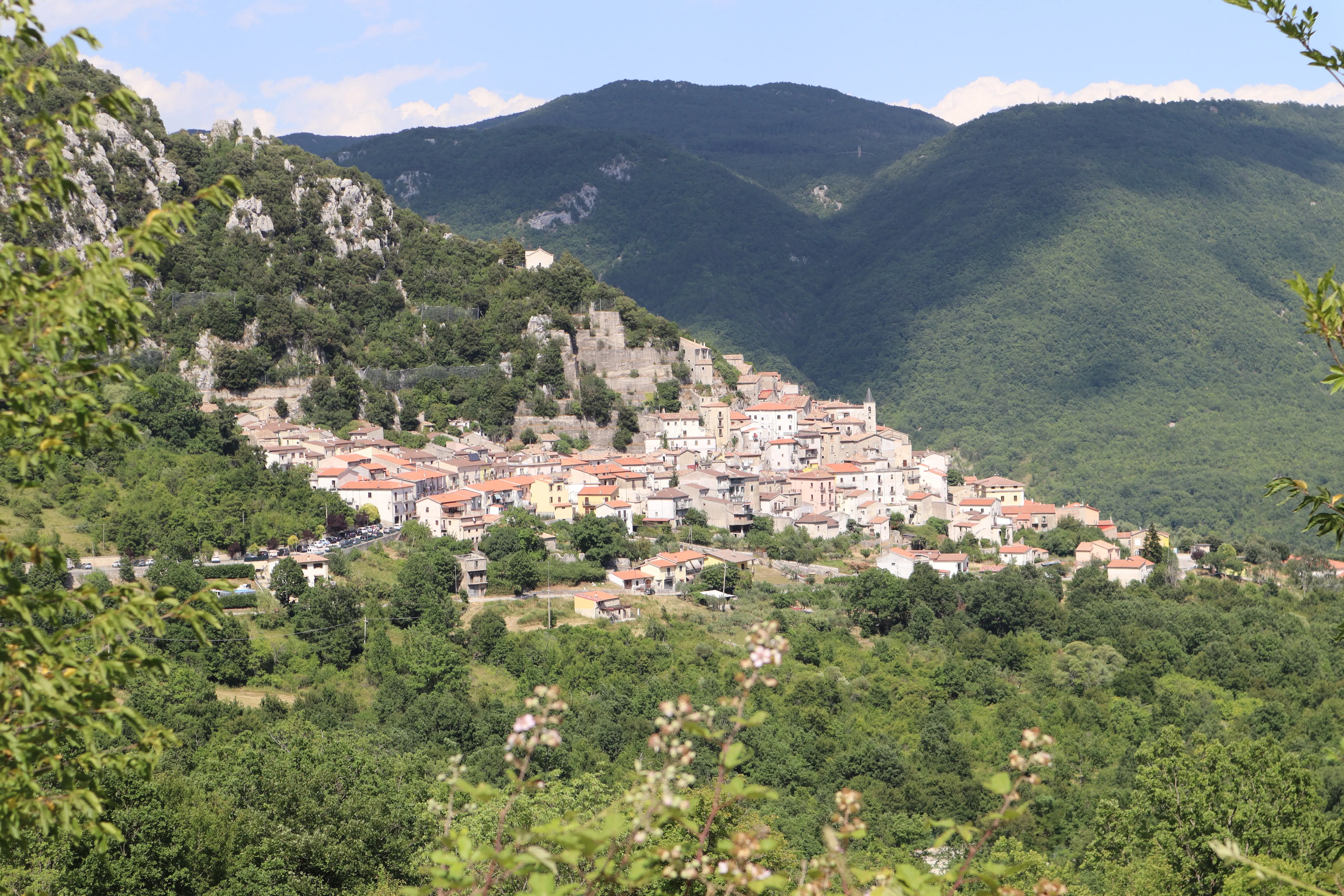Tucked in the mountain slope of Pizzone, Italy, behind a swath of oak and beechwood trees, 28-year-old Jessica Santucci’s inherited family farm is serene. But with the click of a gate latch, calm turns to chaos as 30 sheep explode from the barn.
Santucci cares for 40 cows, a herd of goats, a flock of sheep, three dogs, and rows of vegetables to ensure the region of Molise’s rich local produce and specialty cacioricotta cheese endures. She feels a “duty and loyalty to the land her family has worked for so long,” an ancient pull that she struggles to articulate but demonstrates in the way she cares for the animals.
She prides herself as being independent of a large agricultural production facility and raises free-range chicken for organic eggs and meat. She sells her products to the market in Pizzone, in addition to other direct buyers made up of neighbors and friends, and a shop or two in the nearby city of Isernia.
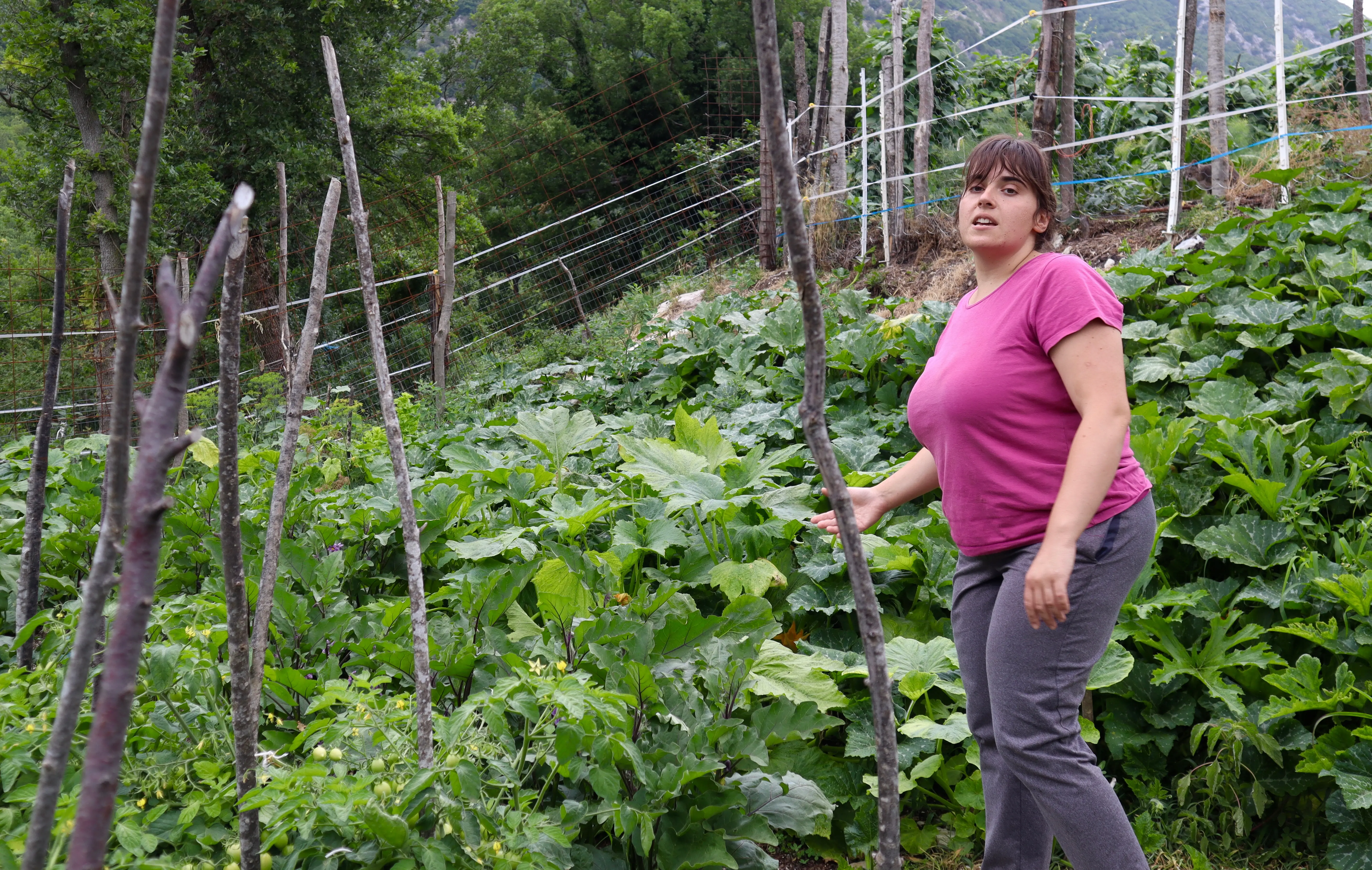
Pizzone is one of many rural villages in Italy trying to augment its fast-dwindling population with incentive programs for young families who are aspiring to abandon cities in favor of a slow, simple life on a diverse, small-scale farm.
In an effort to bring young, educated, and metropolitan families back to rural areas to fill rapidly emptying houses, the national government and European Union set aside funding to develop incentive programs that highlight the health benefits and self-sufficiency of village life.
There is a counterflow of young people leaving cities to move to the country and take up small-scale farming and bee-keeping. The number of young Italian graduates, mostly under 35, retreating from city centers to rural areas with a shovel in one hand and a laptop in the other increased by 35 percent by 2018. That number has been steadily climbing over the last decade, according to Italy’s National Institute for Agricultural and Food Market Services.
The region of Molise started its own incentive program in 2019 with the hope of harnessing the new movement to the countryside, encouraging young families to relocate in a remote village and open a business there for at least three years. The government decided to pay families €700 to help reimburse their monthly rent and expenses in exchange for the relocation.
The municipal office of Pizzone received hundreds of calls from interested individuals for the €700 program, but the COVID-19 outbreak in 2020 shuttered any momentum it gained, town clerk Antonio Di Silvio said. By the time Italy re-emerged from the virus, the three-year trial program had ended.
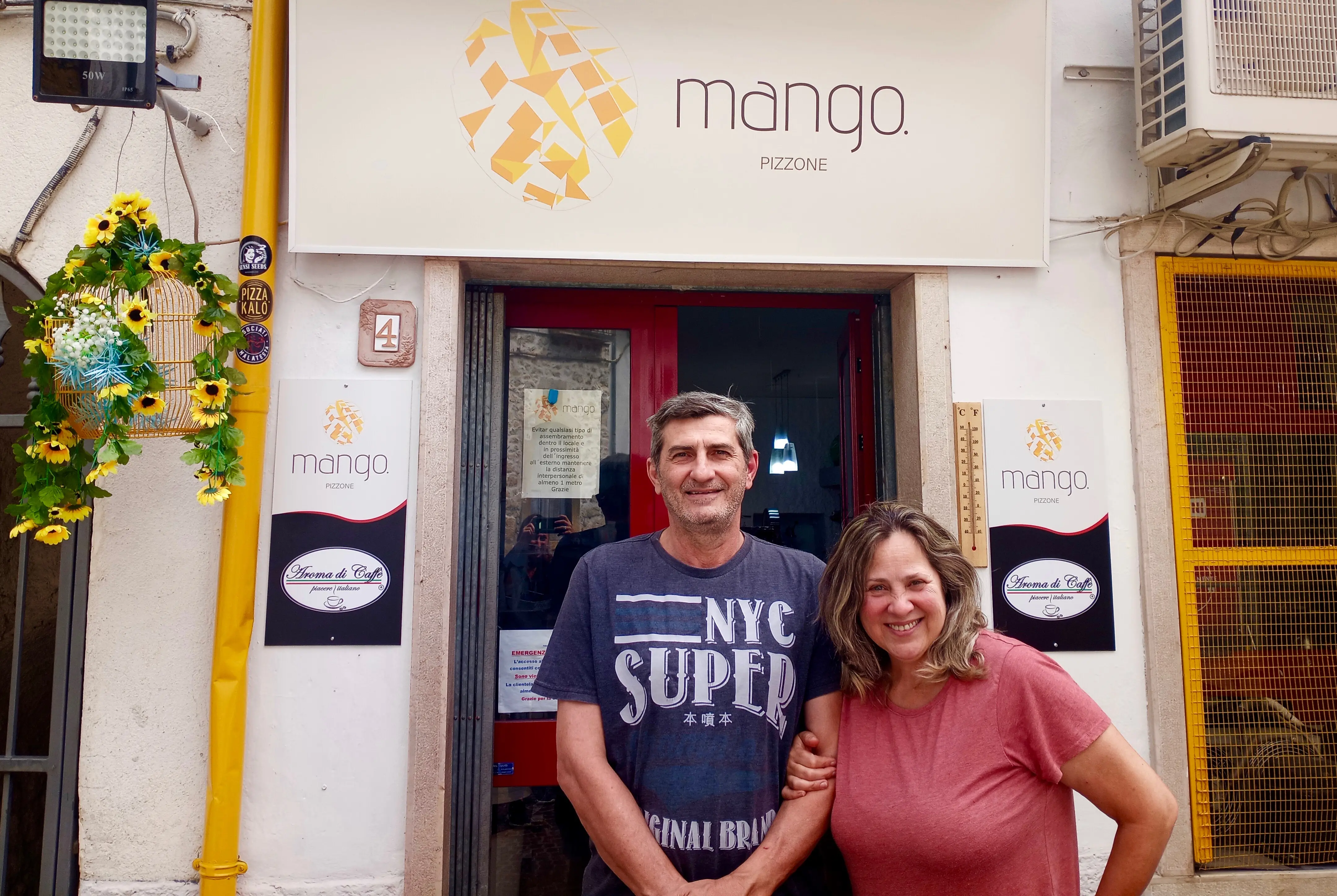
Of the 349 buildings in Pizzone, more than 100 remain empty.
Despite the village’s unequivocally beautiful natural landmarks like Valle Fiorita, a valley that curves below 7,000-ft mountain peaks like a bowl of wildflowers, there is a joke in Italy that il Molise non esiste—Molise doesn’t exist. Unlike Santucci, thousands of young people have poured out from the fortified mountain towns in trickles and bursts to Naples, Rome, and the United States—my own ancestors among them.
At one time, as many as 1,500 or 2,000 people lived and worked in Pizzone. Today, only about 270 people remain in the village—that’s 170 families living there year-round. Of those families, the majority consist of a single person in a household year-round. Only two or three of them have children.
People older than 45 make up 65 percent of the population, and the town has an old-age index of more than double that of Italy as a whole, which itself is defined by an aging population. The number of deaths in the municipality was more than double the number of births in 2017.
As was true of much of Italy, economic migration out of Molise began between the end of the 19th century and the beginning of the 20th century. More than 1,000 Pizzonesi and their descendants currently live in Chicago, and many Molisani settled in New York City, as did my family.
“I’m one of the few that had the courage to stay, but I am content with my decision,” Santucci said. “I am remaining here with my passion.”
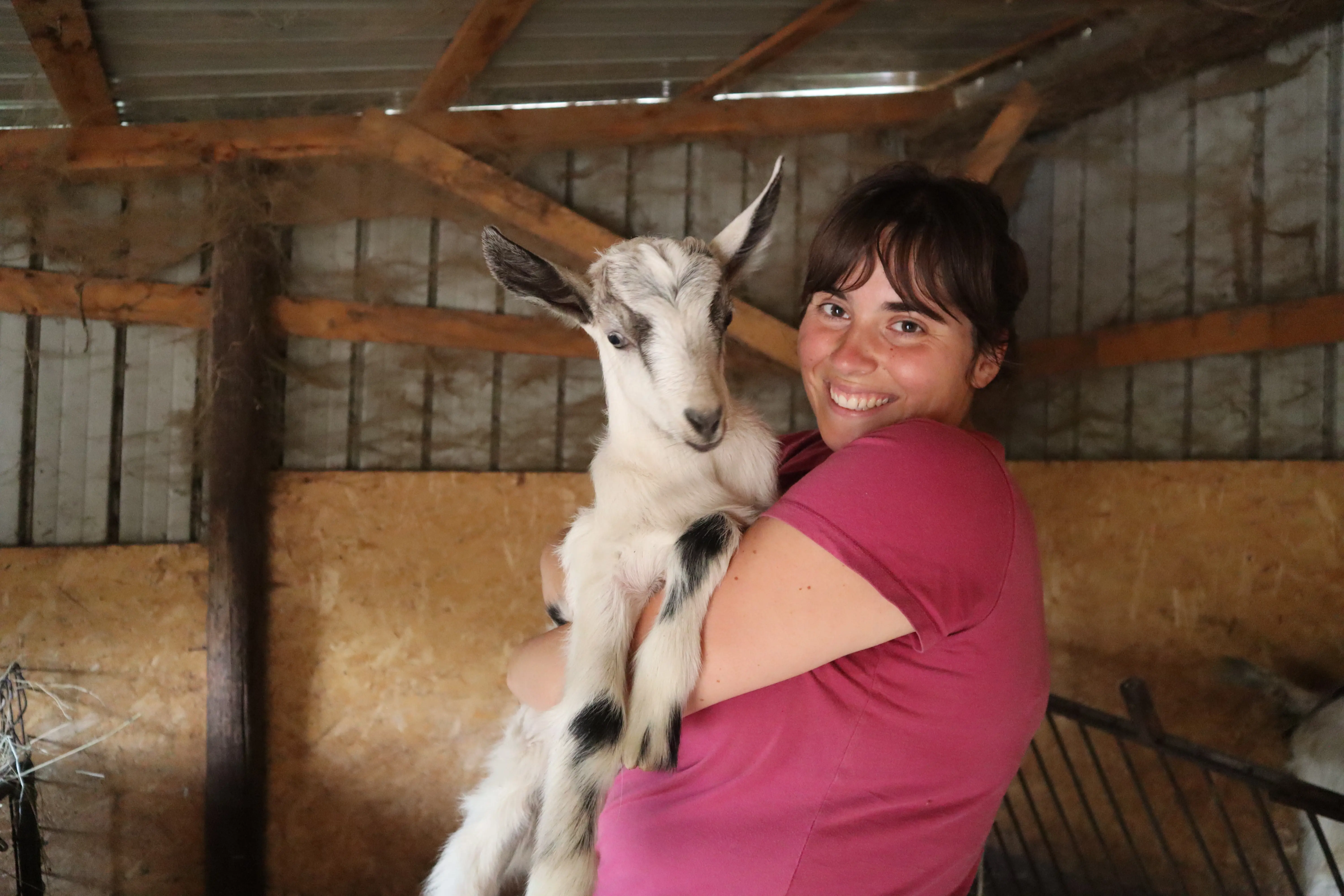
Outsiders not welcome – including other Italians
The number of tourism destinations in villages off the beaten track is also surging, peaking at 20,500 registered businesses with accommodations in 2020, compared to about 1,500 registered organic agritourism businesses in 2011.
But the industry only provides income during the busy summer vacation months, and municipalities are desperate for a permanent solution that will increase local services and improve the quality of life for their residents as well.
Bringing refugees and immigrants here could be a solution, Elena Novielo, a shoemaker in her 40s, said as she gazed around the illuminated piazza of Pizzone, empty in the evening save for the handful of people sitting around the table with her. But the Pizzonesi are not yet willing to accept new people, especially people who are so different from them, she said.
Italy’s overall population shrank by 384,000 in 2020, the most in over 100 years. The migratory balance was negative for the first time since 1987 because of international travel restrictions under the COVID-19 pandemic, with emigrants surpassing immigrants by 42,000.
Fixing up the village’s crumbling houses for immigrants and refugees is a viable solution for rural depopulation and the influx of families seeking asylum in Italy, because they can live in the village year-round and make something unique, Novielo said, like her husband’s honey or her shoes.
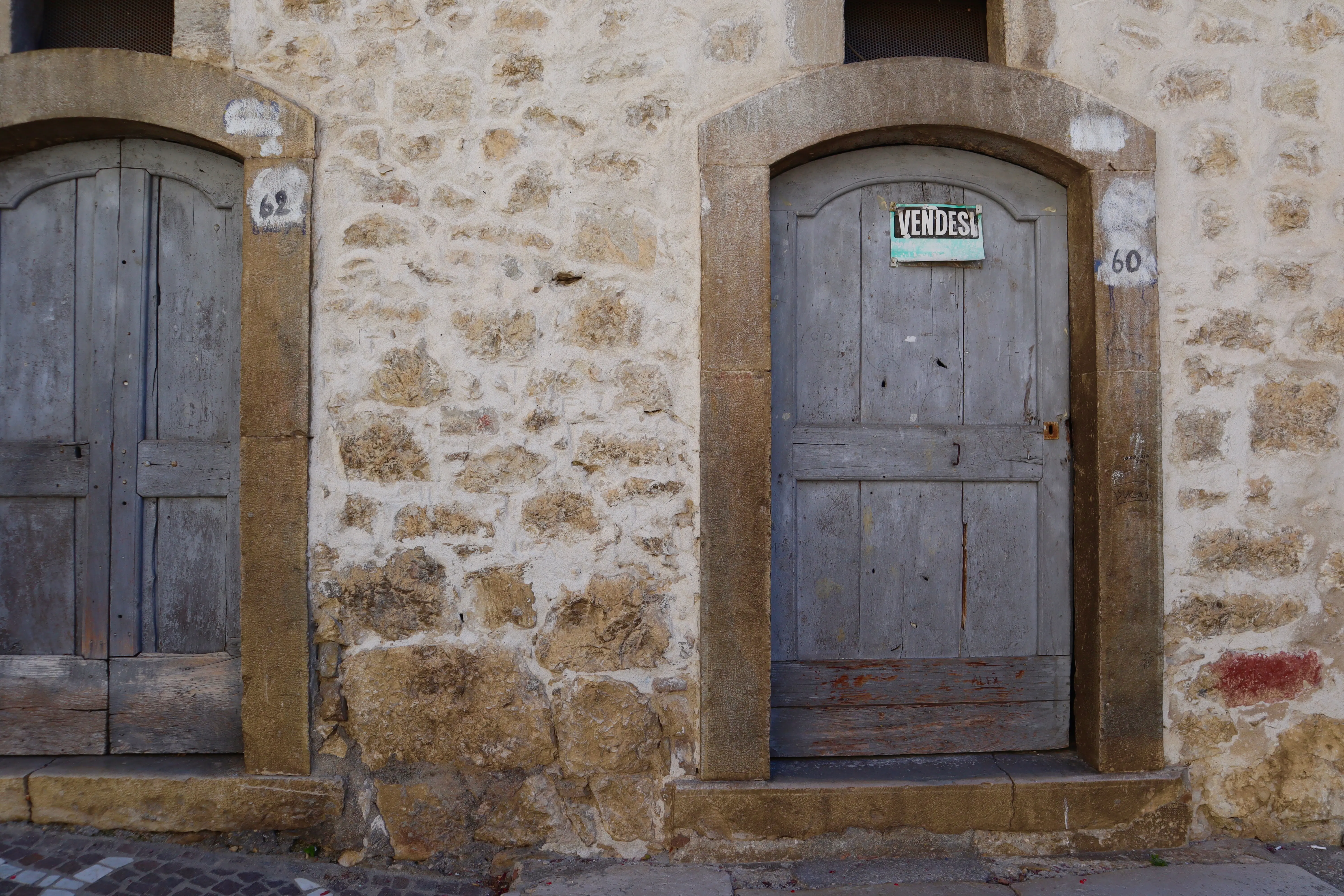
Yet even in the face of this glaring population crisis, the former mayor of a town in the southern region of Calabria, Domenico Lucano, was sentenced to 13 years and two months in jail in September 2021 for allegedly abetting illegal immigration after welcoming migrants into abandoned homes repaired with government money.
Lucano was allegedly making private properties valuable instead of benefiting migrants with the funding, but regardless of his motives, not many refugees and migrants who land in towns like Pizzone are staying long anyway. Job opportunities are few, and there are no restaurants, shops, or pharmacies, much less a school or hospital. The closest primary school is down the mountain, in a borgo 20 minutes away, and the closest secondary school is in the city of Isernia, over 30 minutes away.
Perhaps most startling of all for a mountain town, there is no gas heat. Residents park their cars and pick up wood on the edge of town to carry up the mountain on foot. In the winter, they do this each day through several feet of snow. Then begins the process of starting a fire in the long, unforgiving winters.
“It is strange,” Novielo said as she crossed her legs on the plastic bench and took a sip of a shared bottle of Peroni from a plastic cup.
Originally from Rome, Novielo moved to Pizzone with her husband 17 years ago to raise bees, make honey, and build their own house for their two children. She advertised her traditional shoemaking and has one of the most prosperous businesses in Pizzone run from her home. Customers from all over the world order her specially crafted shoes.
Gigi Novielo, Elena’s husband, is eking out a living as a beekeeper, growing chickpeas for his family to eat, and building a farmhouse board by board. The bees give back to the land by pollinating the flowers and the crops, Novielo said. The honey he makes never lasts long on the shelves of the market in Pizzone.
Novielo discovered the village by chance during a hike on Monte Metà, a nearby mountain, and knew he wanted to stay. But his children, 12 and 16, only want to return to the seaport city of Naples.
In the mountain villages, “people are closed to outsiders,” Gigi Novielo said, including his family.
Newcomers make the Pizzonese sentimental about the loss of so many families to America, even though the desire to keep the village alive only for the original Pizzonese is limiting, Elena Novielo said.
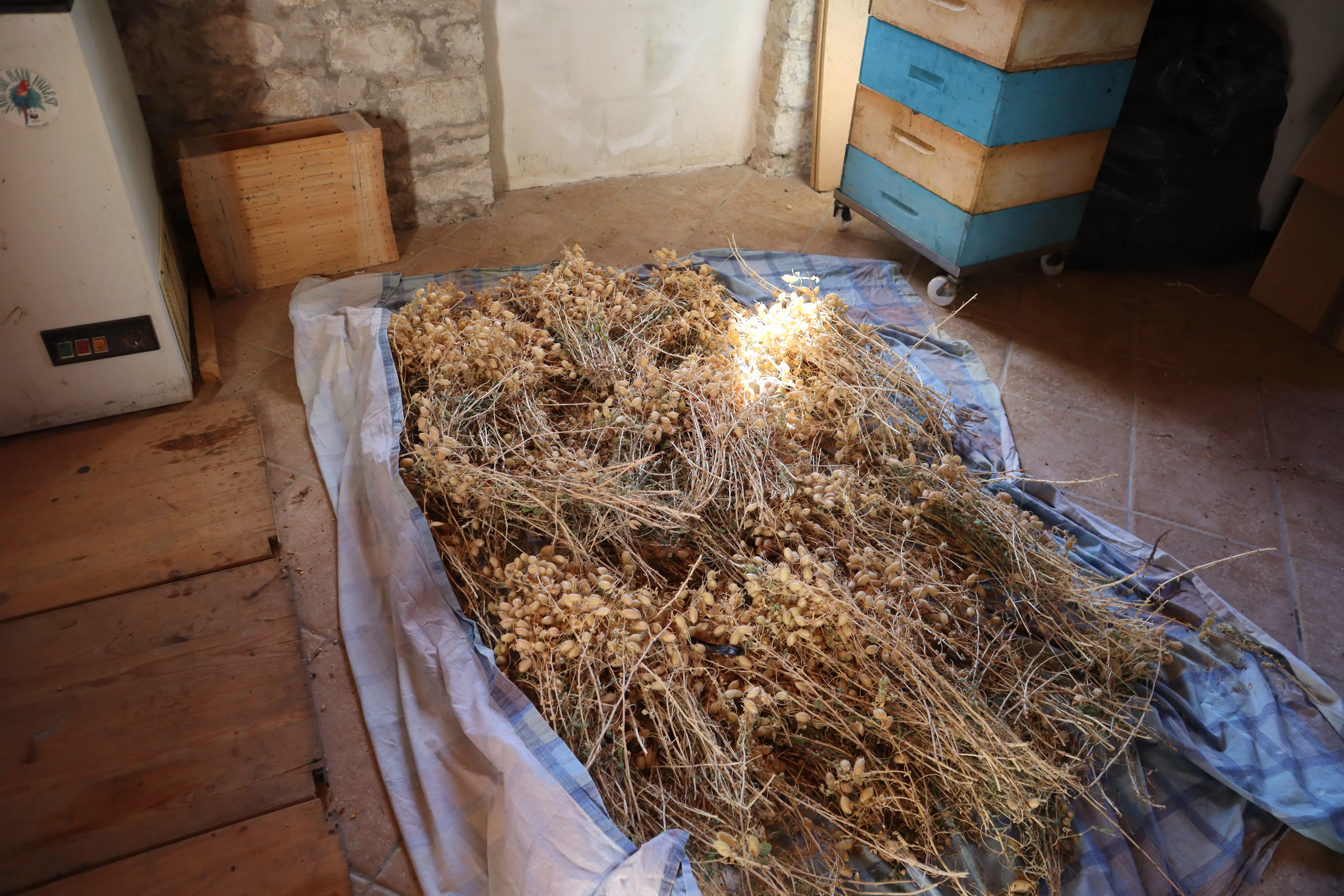
Etienne Kambale Kinoa, priest of the Church of San Nicola Vescovo di Bari and another newcomer in the village, has dreams of bringing fresh ideas and leadership to the village.
Originally from the Republic of Congo, Kinoa studied to become a priest in Rome, and was sent to Pizzone to fill an opening at the church. The problem with depopulation, he said, is the village is not united in solving the problem.
“I am trying to change the mentality, but it is difficult,” Kinoa said. The families who remain are “always at war with each other.”
A large project that will create work and unite the community is necessary to attract anyone, including migrants, to live in Pizzone, he said. People would come on their own, instead of being paid to move there.
Loggers, farmers, and bus drivers make enough to live on in Pizzone, but these are the only occupations available.
Compounding the employment problem is the fact that internet access is unreliable at best. When Italy's soccer team made it to the UEFA European Championship final in July 2021, much of the town gathered in the piazza to watch the game projected on a bedsheet hung in a corner from a laptop. As the internet cut in and out at crucial moments, groans and wails of agony broke out across the piazza.
Anyone who moves to the area to work from home, a popular trend that skyrocketed at the height of the pandemic, would not be able to do so from Pizzone, knocking out a key demographic of potential residents.
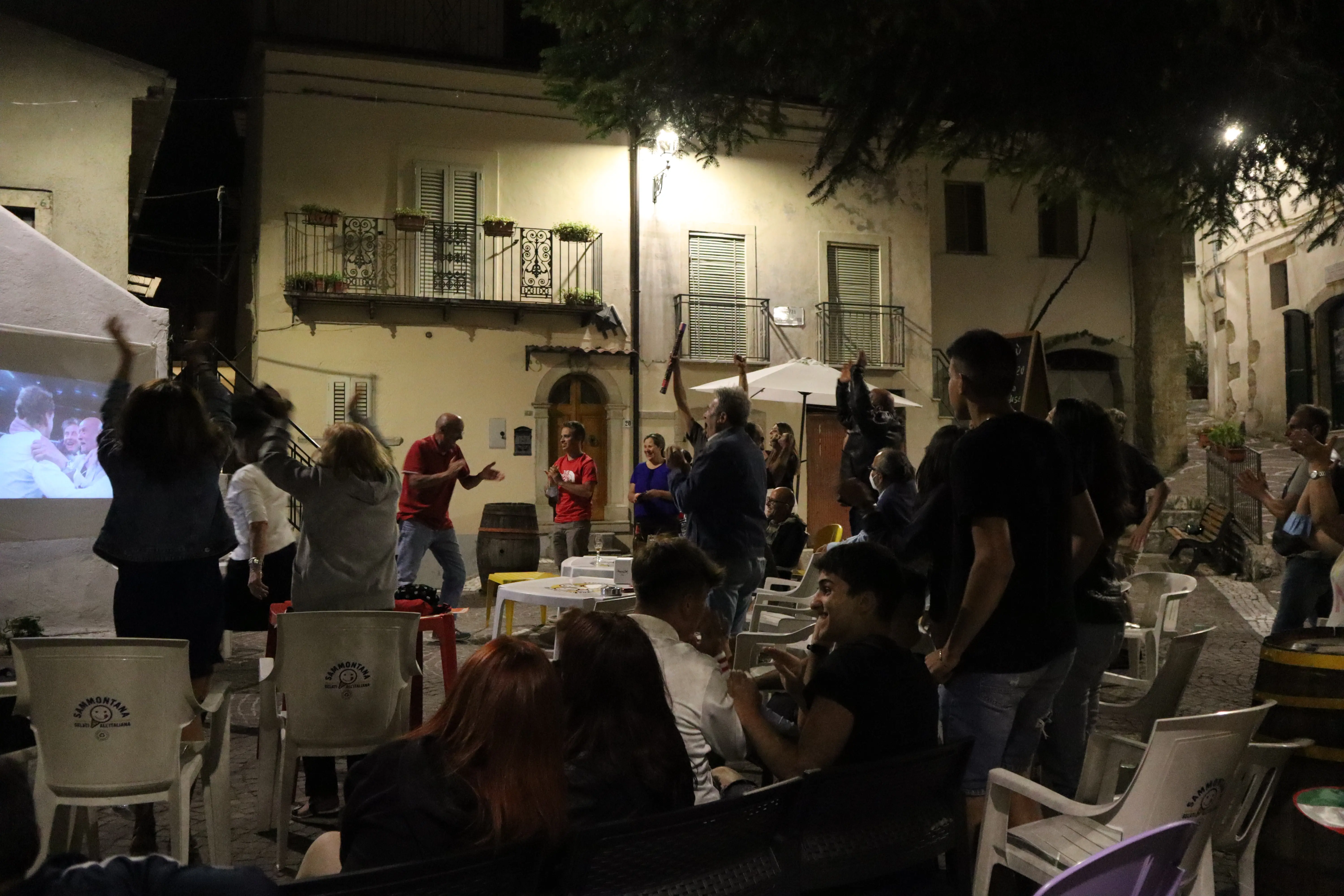
Southern Italy’s corruption problem
“Sometimes, I think it is too late for Pizzone,” Lucia Santucci, a nurse in her late 20s, said as she walked along a rushing tributary toward the lake of Montagna Spaccata.
If the varying national government agencies could coordinate and communicate effectively with the small regions, programs like the €700 stipend might actually work, Santucci said. But political divides also create a stalemate. Local farmers are unable to sell their products unless the people buying agree with their political viewpoints.
“There are so many programs to help towns like this, but with corruption the money ends up in the hands of others,” Santucci said, and so people in the south “have no faith in the government.”
Along with the Italian government’s suffocating bureaucracy is the common practice of corruption—almost a given in Southern Italy in particular, Santucci said. Even the former mayor of Pizzone has been suspected of taking money allocated for specific programs and rerouting it to other projects, public or private. By the summer of 2021 she was no longer in office, and Pizzone was left without a mayor or local leadership.
Young people with motivation are still leaving Molise, and so the value of Molise itself has less place in the mind and emotions of Italians. Pizzone’s medieval history and collapsing homes are boring to them—they don’t care enough to attempt to preserve it, Santucci said.
With family homes sitting dormant, small, rural communities also started giving away the timeless but crumbling houses and villas for a single euro.
According to Maurizio Berti, marketer and spokesperson for the federal Case a un euro project, selling empty houses for one euro will bring people willing to spend the money, time, and energy rebuilding and improving the structures to villages like Pizzone.
“The houses are in very bad condition, but no one in the villages wants to or can take on fixing them up,” Berti said while gazing down at a dilapidated stone structure abutting an ornate church that dates back to medieval times.
Italy is an open museum, and the people who want to enjoy and appreciate it will put down their own roots in the villages by building a home, Berti said. They will also spend money on local products typical of the region and in agritourism businesses where they can learn how to make the pasta instead of just eating it, he said.
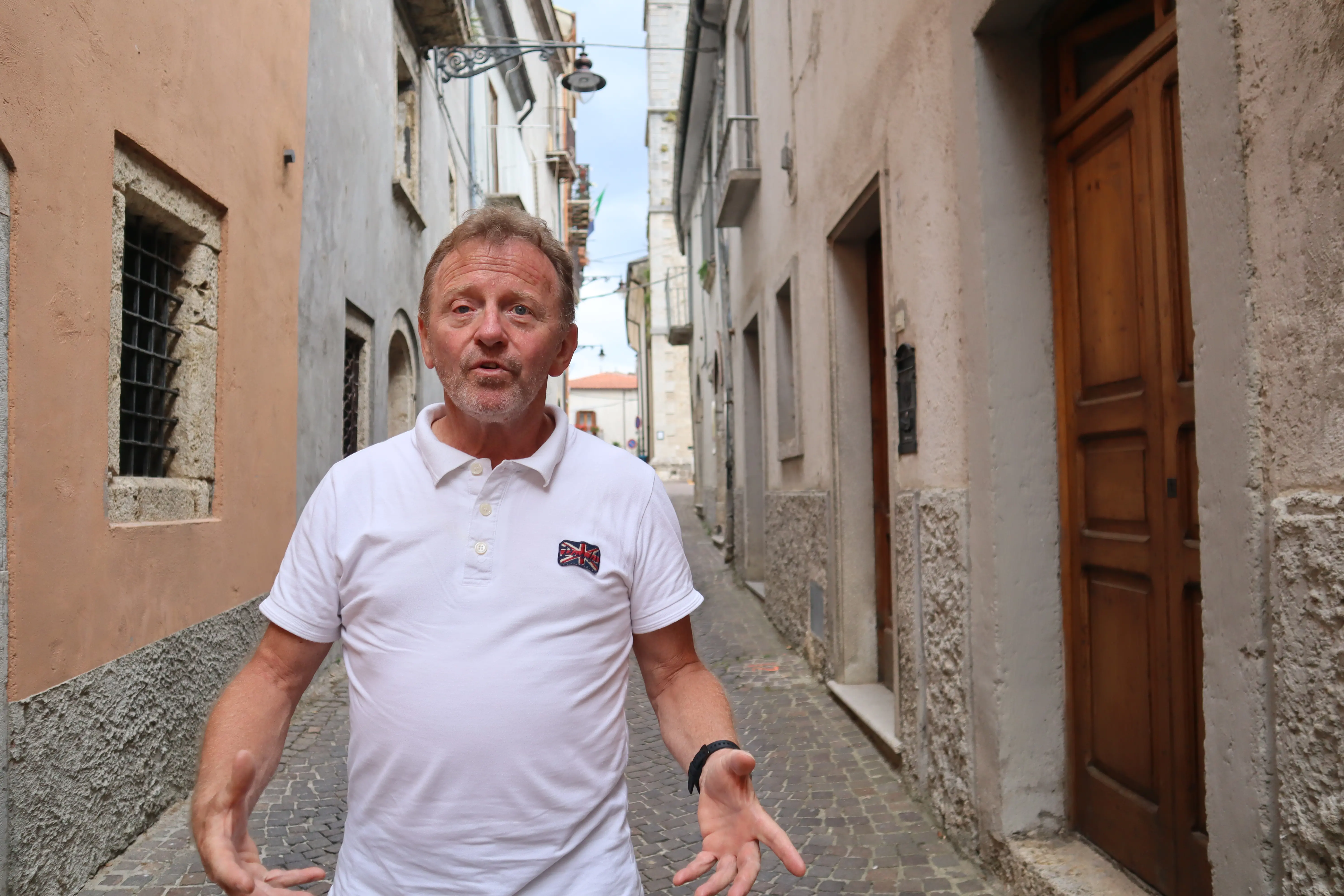
One example of this theory is already playing out in Sicily, where thousands of the many Italian Americans with Sicilian roots are seeking to reconnect with their ancestral villages.
Meredith Tabbone from Chicago is one such American. She recently purchased a €1 home in the village Sambuca, where her great grandfather is from. Of the 100,000 people who sent emails interested in homes in Sambuca, 30,000 also visited the village.
“It made me wonder how much of this was just a tourism push,” Tabbone said.
But to live in the places that need the most help, such as Pizzone, è una vita dura—it is a difficult life.
As a nurse, Santucci has to travel an hour to the village of Rosello to find work. The town also has natural gas heat, so Santucci does not have to carry wood up a mountain and start a fire to heat her home after working a nursing shift.
“The problem is how do you open services without people, and how do you bring people here without services?” Di Silvio said between a constant stream of visitors to his municipal office in Pizzone.
One family from Vermont purchased a tract of land near Rocchetta in Molise to build a home and a farm. Their only connection to Italy was a distant ancestor, but in the seven years they lived there the family managed to create a community of people who believe wholeheartedly in their mission of naturalist, permaculture farming to revive the soil and agriculture, Gigi Novielo said.
But with no schools or hospitals nearby, the husband, wife, and five children eventually moved back to Vermont.
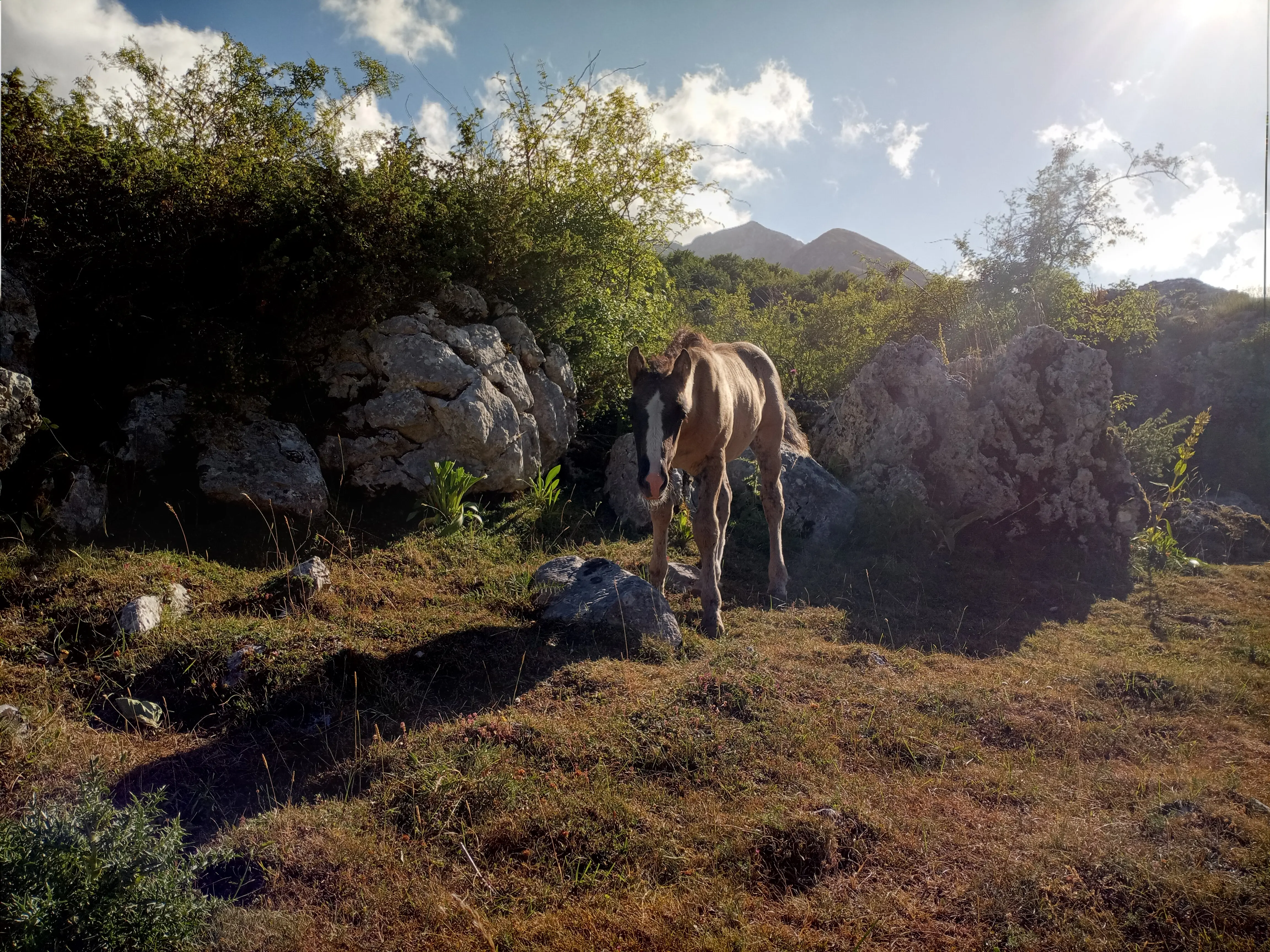
Balancing tourism and authenticity
Pizzone lies at the edge of the National Park of Abruzzo, Lazio, and Molise, with the majority of the park falling on the Abruzzo side. Most of the park funding pours into Abruzzo as well, leaving the trails perfectly curated across the border and the Molise side bereft of clear signs or places tourists can explore with confidence.
A group of Molisani, determined to make their side of the park more welcoming for visitors, has begun to mark the ancient Roman trails for tourists without overly developing them. Called “Sentieri Aperti,” or “open trails,” a collection of tour guides, locals, and avid hikers gather and clear the trails on their own. The payoff, they hope, is an increase in foot traffic on the paths and for businesses in the area.
Andrea Rossi is one of the local tour guides of Sentieri Aperti. Originally from Cerro al Volturno, a larger city of 2,800 residents, he has been working as a guide for the growing numbers of tourists in his home region of Molise for four years.
In 2020, he began working as the tour operator for a new campsite destination on the glimmering lake of Castel San Vincenzo, equipped with a new appreciation of the community and landscape that nurtured him as a child. The burgeoning industry is the region’s only hope for economic improvement, according to Rossi.
“Molise is not popular, not even within Italy,” Rossi said.
To create a truly local economy, the region needs a different approach than a program that offers a family €700 per month to potentially open a business for three years, especially if the people who are already operating businesses in the region can’t afford to keep them, he said.
“You need a base [of services] to really welcome the people who want to come here,” Rossi said. A family purchasing a house for €1 and fixing it up is not going to help places like Pizzone or Cerro al Volturno stay alive either, he said.
“If there are 100 houses falling down, you as the potential owner are not interested,” Rossi said. “If you want to become attractive...., you need to have services in places like this.”
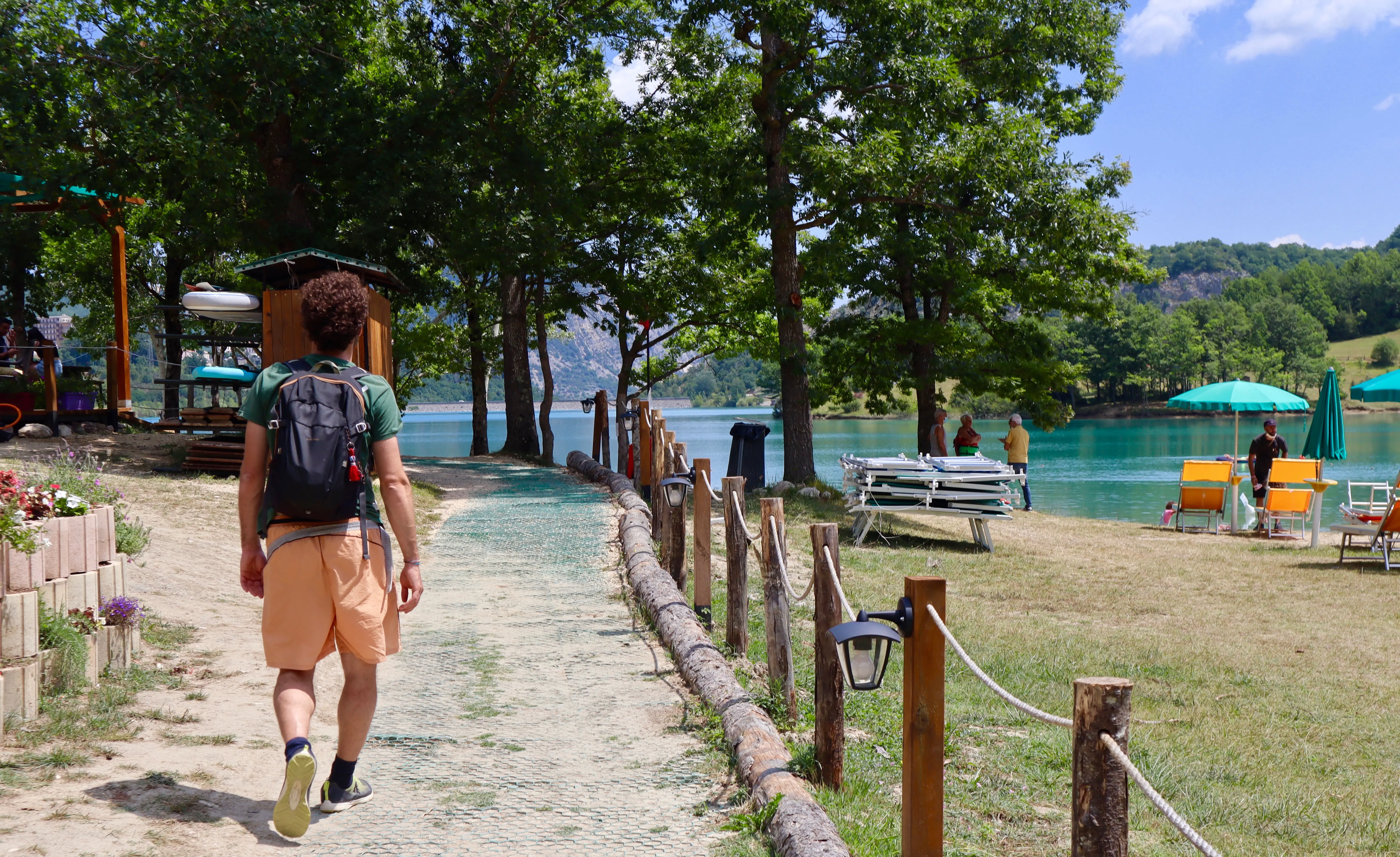
Marco Orioni and Simone Notardonato, the owners and developers of the new campsite, returned to Molise five years ago after living abroad with new eyes that saw potential. The pair razed a small section of broadleaf trees on the lake of Castel San Vincenzo to set up a campsite. Bright yellow beach chairs with turquoise umbrellas were lined in rows along the water. They slapped together planks of wood in front of a shed to create a bar.
At the entrance, Orioni and Notardonato built a pizza bar, which allowed them to raise the total number of people they employed in Molise to 22 each season.
“If you are doing little stuff with a higher quality, people are more interested in that,” Rossi said, slipping down a pathway that snaked through tent sites.
Five years ago, not a single tourist visited the lake of Castel San Vincenzo. Today, tourism is an “inevitable part of the game in building Molise’s economy in the 21st century,” Rossi said, and one of the tourist attractions it offers people in today’s world is a sound night’s sleep without noise or lights. The mountains of Molise have cooler temperatures free from the heat-island effect increasing scorching cities like Rome and Naples.
Villages like Pizzone should have hiking areas, camping sites and activities such as yoga sessions so that other existing occupations compete for workers by offering better pay.
Ironically, tourism is also the thought that keeps Andrea awake at night.
In this new era of over-tourism in a country as beloved and revered as Italy, Rossi, Orioni, and Notardonato are trying to build an industry that is sustainable; one that doesn’t kill the very reason people want to visit the rambling, clear mountain streams and scattered valleys.
“We should remain little; the world is going in that direction,” Andrea said.
Molise is one of the few regions in Europe with an opportunity remaining to strike the balance between attracting tourists without sacrificing its authenticity. Visitors to the Parco Turistico can explore by electric bike rather than by car. Kayaks and paddle boats are available to take out on the lake, but any kind of motorized boat or ski is not allowed.
Beyond clearing a section of trees for the site, there has been minimal environmental impact to the lake and the forest.
“We don’t have to be the ones to create a five-star hotel, or modify who we are,” Rossi said.
Monetizing the land, Rossi admits, is a strange concept for him. But the park provides services to visitors, and it is these services that have brought international visitors to the lake of Castel San Vincenzo. Businesses in the surrounding villages benefit from the increase in customers, and the park partners with hiking guides, yoga instructors, and artisans to grow their list of activities while employing more people in the region.
Instead of selling houses for one euro or paying a few families to move to Molise, politicians should create the conditions to allow local entrepreneurs like Orioni and Notardonato to have direction and support in business ideas that are already creating solutions, Rossi said. “We are active, we are not dead.”
It remains to be seen whether Molise will revamp programs like the €700 per month payments. The Italian Agency for Territorial Cohesion allocated about €2.1 billion for similar programs in the years between 2021 and 2027.
Far above sea level with cooler temperatures, Molise is “more capable of a future tomorrow,” said Alessandro Pirani of the agency. “There’s a huge amount of money raining on those territories to support their endeavors.”
The National Union of Mountain Municipality and Community Authorities argues in an analysis of the policy that borghi face no small bureaucratic complexity in accessing these economic resources, slowing the effectiveness of the measure. The few people employed in the town hall of these mountain communities do not understand how to navigate or access the right forms, nor how to apply for the programs.
Many are also discouraged by general neglect of their communities to have a sense of optimism. But Jessica Santucci said it is important to “bring back to life our villages.”
In doing so, “we bring back to life our health, our ecosystem, and healthy food,” she said, standing among rows of her beans, basil, cucumbers, melons, lettuce, eggplant, and zucchini. More than just knowing where food comes from and having clean air to breathe, living in a place like Pizzone “helps people get to know this world.”
Under bad economic conditions, people are “forced to move to Rome or Milan for work,” Santucci said. “But they do not have the same connections to place that people have here.”
